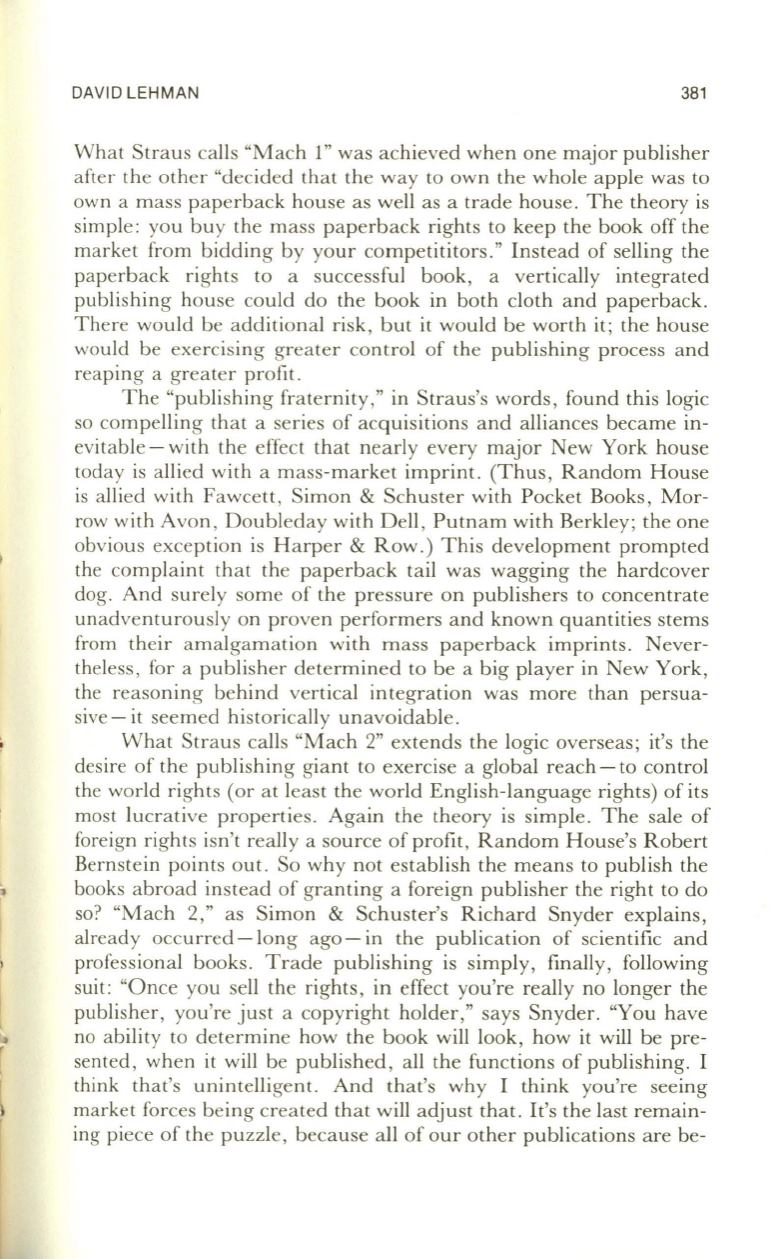
DAVID
LEHMAN
381
What Straus calls "Mach 1" was achieved when one major publisher
after the other "decided that the way to own the whole apple was to
own a mass paperback house as well as a trade house. The theory is
simple: you buy the mass paperback rights to keep the book off the
market from bidding by your competititors." Instead of selling the
paperback rights to a successful book, a vertically integrated
publishing house could do the book in both cloth and paperback.
There would be additional risk, but it would be worth it; the house
would be exercising greater control of the publishing process and
reaping a greater profit.
The "publishing fraternity," in Straus's words, found this logic
so compelling that a series of acquisitions and alliances became in–
evitable-with the effect that nearly every major New York house
today is allied with a mass-market imprint. (Thus, Random House
is allied with Fawcett, Simon
&
Schuster with Pocket Books, Mor–
row with Avon, Doubleday with Dell, Putnam with Berkley; the one
obvious exception is Harper & Row.) This development prompted
the complaint that the paperback tail was wagging the hardcover
dog. And surely some of the pressure on publishers to concentrate
unadventurously on proven performers and known quantities stems
from their amalgamation with mass paperback imprints. Never–
theless, for a publisher determined to be a big player in New York,
the reasoning behind vertical integration was more than persua–
sive- it seemed historically unavoidable.
What Straus calls "Mach 2" extends the logic overseas; it's the
desire of the publishing giant to exercise a global reach - to control
the world rights (or at least the world English-language rights) of its
most lucrative properties. Again the theory is simple. The sale of
foreign rights isn't really a source of profit, Random House's Robert
Bernstein points out. So why not establish the means to publish the
books abroad instead of granting a foreign publisher the right to do
so? "Mach 2," as Simon
&
Schuster's Richard Snyder explains,
already occurred -long ago - in the publication of scientific and
professional books. Trade publishing is simply, finally, following
suit: "Once you sell the rights, in effect you're really no longer the
publisher, you're just a copyright holder," says Snyder. "You have
no ability to determine how the book will look, how it will be pre–
sented, when it will be published, all the functions of publishing. I
think that's unintelligent. And that's why I think you're seeing
market forces being created that will adjust that. It's the last remain–
ing piece of the puzzle, because all of our other publications are be-


